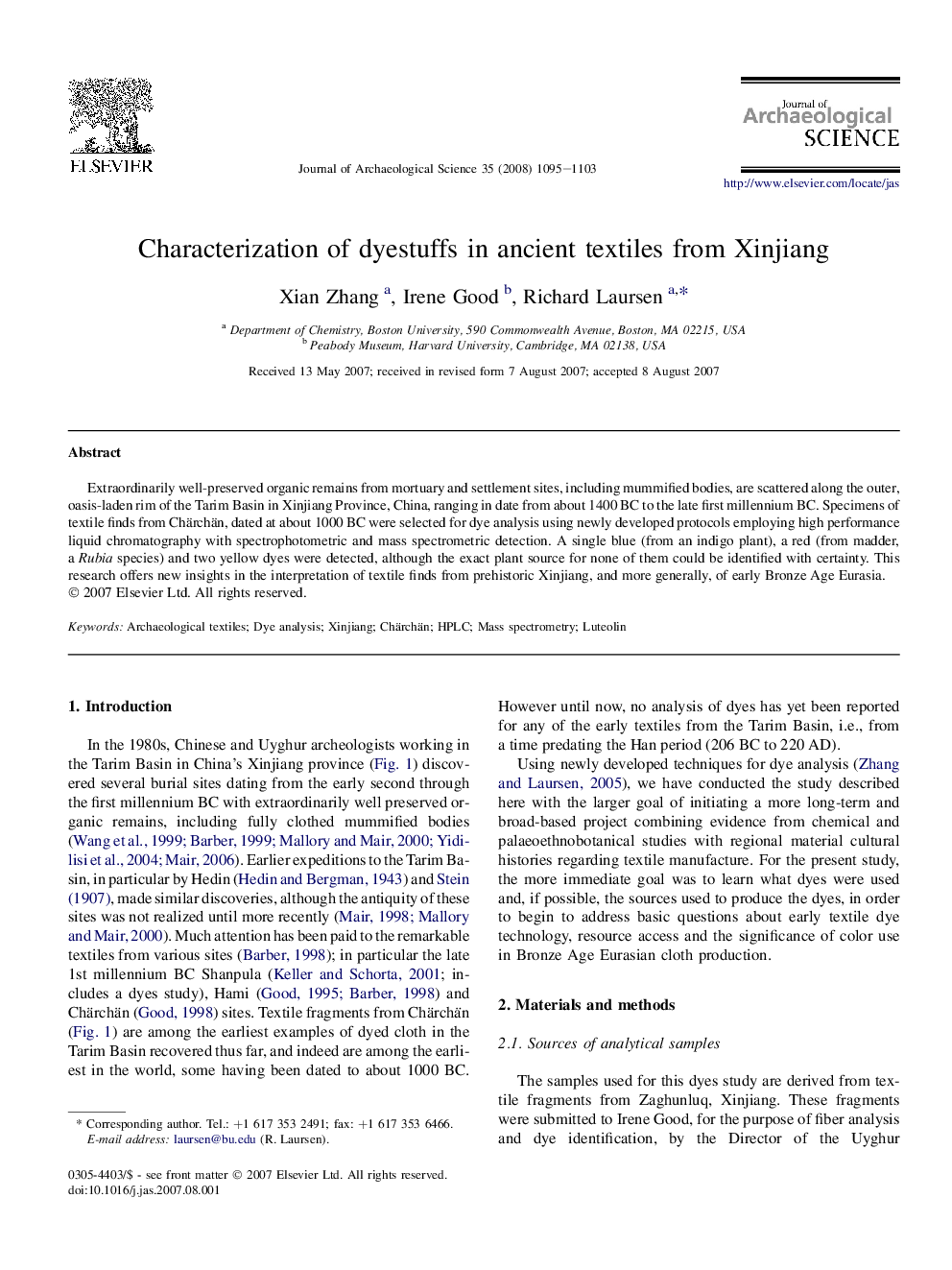| Article ID | Journal | Published Year | Pages | File Type |
|---|---|---|---|---|
| 1037465 | Journal of Archaeological Science | 2008 | 9 Pages |
Extraordinarily well-preserved organic remains from mortuary and settlement sites, including mummified bodies, are scattered along the outer, oasis-laden rim of the Tarim Basin in Xinjiang Province, China, ranging in date from about 1400 BC to the late first millennium BC. Specimens of textile finds from Chärchän, dated at about 1000 BC were selected for dye analysis using newly developed protocols employing high performance liquid chromatography with spectrophotometric and mass spectrometric detection. A single blue (from an indigo plant), a red (from madder, a Rubia species) and two yellow dyes were detected, although the exact plant source for none of them could be identified with certainty. This research offers new insights in the interpretation of textile finds from prehistoric Xinjiang, and more generally, of early Bronze Age Eurasia.
